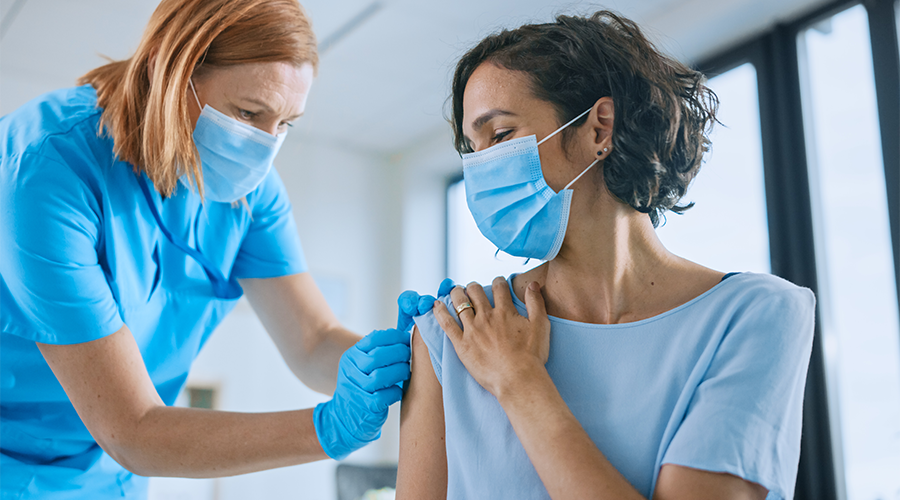A new variant landed this summer and has been making its way to being at the top of all COVID-19 cases in the U.S.
EG.5.1, unofficially nicknamed “Eris,” is an offshoot of the omicron variant EG.5 and has been circulating throughout the country since spring. And as of August 5, the Centers for Disease Control and Prevention (CDC) said it accounts for 17.3% of COVID infections. CDC data shows this is an increase from the 1.1% of cases it was estimated to make up at the end of May.
The good news is that while it’s been deemed by experts to be the fastest growing strain thus far, public health officials say there is no evidence that EG.5 causes more severe illness. Furthermore, it’s completely normal for the virus to mutate and new variants to emerge.
EG.5 is an offspring of omicron, and while contagious, it’s not more serious. In fact, it’s less invasive and lethal in the body. The response to it is generally the same as for other variants. The CDC also indicates that the EG.5 variant appears to be susceptible to coronavirus vaccines.
Symptoms to look for with this subvariant are very similar to the coronavirus in general:
- Dry cough
- Runny nose
- Sneezing
- Fever
- Chills
- Fatigue
- Muscle or body aches
- Shortness of breath
- Loss of taste or smell
- Headache
The symptoms can range from mild effects to more serious illness. But with fluctuations in weather and a lack of testing, it can be difficult to differentiate between an EG.5 infection and the flu or a common cold.
Elderly people are at higher risk and may be the most vulnerable to these new strains. Plus, their immunity from vaccination can dwindle more rapidly. While EG.5 doesn’t seem to be increasing the number of cases in intensive care or deaths, it could be responsible for more hospitalizations.
Health experts say vaccines and boosters should still be encouraged, along with safe social practices, such as wearing face masks, and keeping rooms well ventilated.
U.S. health officials are preparing to administer booster doses of coronavirus vaccines in the fall. The vaccines are made with a new formula that targets the XBB subvariants that accounted for most infections in 2023.
From the Magazine
This article was published in our quarterly print magazine, which covers relevant topics in greater depth featuring leading experts in the industry. Subscribe to receive the quarterly print issue in your mailbox. All registered independent pharmacies in the U.S. are eligible to receive a free subscription.
More articles from the September 2023 issue:
- Your Extraordinary Front End
- Hearing Aids vs. PSAPs
- AI Chatbots in Health Care
- Medication Adherence Programs
- DSCSA Deadline Looming
- Unsalable Products
- DIR Rule Changes
- All Eyes on EG.5.1
A Member-Owned Company Serving Independent Pharmacies
PBA Health is dedicated to helping independent pharmacies reach their full potential on the buy-side of their business. Founded and run by pharmacists, PBA Health serves independent pharmacies with group purchasing services, wholesaler contract negotiations, proprietary purchasing tools, and more.
An HDA member, PBA Health operates its own NABP-accredited warehouse with more than 6,000 SKUs, including brands, generics, narcotics CII-CV, cold-storage products, and over-the-counter (OTC) products — offering the lowest prices in the secondary market.












